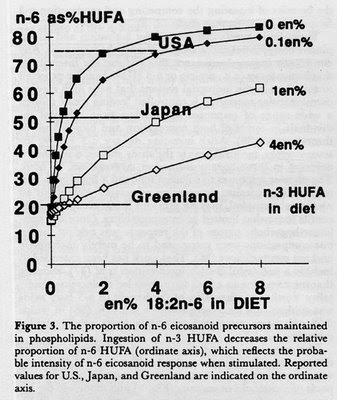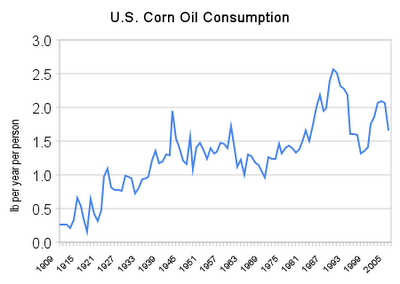You can check your pH levels at home with paper pH strips, available at many pharmacies, or with a battery-operated pH electron meter, available from health catalogues or on our website at: www.phmiracleliving.com
The strips, which are relatively inexpensive and should be easy to find, test the pH of your saliva or urine. The pH of saliva is much more variable, so you are better off testing your urine, which gives you a direct indicator of your tissue pH. Urine pH changes too, in response to what you eat, so first thing in the morning, after you've fasted overnight, is the ideal time to test. The morning urine pH will reflect your lifestyle and dietary choices over the last 24 hours. Ideally, it will be mildly alkaline, pH at 7.2 or higher.
The strips change color to indicate acid or base, and are lighter or darker depending on the intensity of the reading. They come with a color chart to help you translate the color into a number.
If you also want to check your saliva, which ideally will also be above 7.2, test it before eating anything in the morning, and then a few times during the day. If you find that your results are below 7.0, you can correct it immediately by eating a bit of particularly alkaline food, like cucumber, broccoli, asparagus or avocado, or taking 3 teaspoons of Young pHorever pHlavor mineral salts in 4-6 ounces of water. Experiment a little and you will quickly get a feel for what successfully corrects your tests results.
The meters can also be used to test saliva or urine, and the same recommendations apply: It is best to test your urine, and do it first thing in the morning. These meters are quite accurate and give you your pH with a number--no color charts to mess with. But they can be hard to find, and expensive, running into the hundreds of dollars.
So test yourself to see where you are right now, and then retest daily to keep tabs on your progress. You can also see for yourself the effect of meals on pH, by regularly testing with a meter throughout the day. Though the results are not definitive, you will at the very least be able to see trends.
Test yourself after the basic meals like the ones described in our pH Miracle books and Shelley's Back to the House of Health books, and compare the result to those you got from your original diet. Any time you have low pH readings, especially after eating, you know that you are deficient in alkaline reserves. Your body does not have enough of the minerals necessary to process food properly, and cannot adequately respond to the physiological crisis of acidic food or drink.
Your doctor can also do a blood pH test for you. As mentioned in previous emails, the ideal blood pH is 7.365. The American medical establishment accepts 7.4, but that is too alkaline, and actually indicates tissue acidification. It indicates that the body is collecting and storing alkaline minerals to tame excess acidity. If it isn't fending off acidity, the body has no need to become so overly alkaline.
Daily pH testing is a key health check. As long as you are keeping it at 7.2 or better, then you can rest assured your blood and tissues are also healthy. (People coping with serious health challenges may need to increase the pH of the urine or other bodily fluids in order to curb acidity. I recommend that the pH during any serious challenge to be in excess of 8.5)
Monitor your pH according to these guidelines every day for at least 12 weeks, or until you establish a pH balance at 7.2 (with the help of the pH Miracle program outlined in Chapter 11 of the pH Miracle for Weight Loss). Once your are balanced at 7.2 or higher, you can reduce the number of tests to once a day or 2-3 times a week, just to keep an eye on things. Use a notebook to record all your pH results.
1. Upon waking, before you eat or drink or brush your teeth or smoke or put anything at all into your mouth, test your saliva with pH paper. Just wet the end of a test strip with your tongue. Note the color change and write down the corresponding pH number. The optimal result is 7.2.
2. Next, test your first urine of the morning. You just need a couple drops on the end of a test paper. Note the color change and write down the corresponding pH number. The optimal result is 7.2 or more.
3. Test your second morning urine before eating any food. Your result may differ from the first check, because with the first urine you cleared the acid load from the previous day. Again, you're looking for 7.2 or higher.
4. Eat breakfast -- avocado soup, vegetable soup, Healing Soup, or fresh almond milk or green drink. Wait five minutes and then check your urine and saliva again. After that good alkaline meal, your pH numbers should go up from the previous results. You're looking to be between 7.2 and 8.4.
5. Check your urine and saliva pH again between breakfast and lunch, and again between lunch and dinner. You're always looking to stay between 7.2 and 8.4 right after a meal, and at just about 7.2 a couple of hours after a meal.
You can run a simple pH test any time of the day after eating a few almonds. In a health person with adequate alkaline reserves, saliva pH will go up almost immediately to 8.4.
Monitoring your pH puts the responsibility of caring for your health back into your hands. It also lets you track your own results as you make positive changes in your lifestyle and diet, giving you immediate feedback about how you eat, drink and live affects your body and your health -- and ultimately, the quality and quantity of your life.
Live Blood Analysis
If your urine or saliva (or blood) are acidic, it's a safe bet that you have tissue acidosis and possible microform overgrowth.
The simple fact is, most people do.
Live blood analysis more directly detect over-acidity and overgrowth. In a standard lab evaluation performed by hospitals and clinics, drops of blood are basically dried onto a slide to be examined under a familiar bright-field microscope, where acidic patterns in the blood and many of these negative microforms cannot be seen. Live blood analysis, by contrast, examines unaltered live blood, under special dark-field, phase-contrast compound microscopes. The high-powered compound microscope can magnify objects up to twenty-eight thousand times, so you can clearly view acid crystals, bacteria, yeast, and mold in exact detail in the blood. You can also see red and white blood cells, crystallized microforms, mycotoxins, cholesterol, metals, blood clots, undigested fats, and many other things--all in one drop of live blood! Bottom line: though it can also provide a lot more information, live blood analysis gives you a plain view of how crowded your blood is with acid crystals and undesirable microforms.
When I look at live blood, I also look at the space between the cells, where the extracellular fluid, or plasma, is. I call this the negative space, or context. The blood cells, and the blood overall, is only as healthy as this plasma in which they are bathed.
The blood never lies. What you see when you look at it this way is a direct reflection of your health, and what your are eating, drinking, and thinking. In short, it shows how you are living.
I have viewed the blood of thousands of people around the world -- over 500,000 blood samples in over 72 countries -- and through my work I can tell you: there are only two types of blood: healthy, and unhealthy!
Whenever I analyze someone's blood, I always ask them the same questions. What are you eating? What are you drinking? What are you thinking? What are you feeling? The people whose blood looks the best -- the people who live the longest -- are eating green foods, breathing clean air, drinking clean water, finding ways to manage stress, working outside, exercising daily and getting lots of sunshine. And I can see the effects of all that in one drop of blood, no question.
Live blood analysis requires some fairly expensive technical equipment, and well-trained and experienced practitioners to interpret what is seen. We believe every hospital, clinic, doctors office, medical lab, and nutritional center should have a properly trained live blood microscopist on staff. But that day is not yet here, so, although the test is quickly growing in popularity as its importance is better understood, it may not be easy to find a practitioner in your area. You can contact the pH Miracle Living Center via phone or website at: www.phmiraclemicroscopy.com
Dry Blood Analysis
After years of researching German techniques in dry blood analysis, I've developed a test called the Mycotoxic/Oxidative Stress Test (M/OST), which involves a small amount of blood allowed to dry and clot on a microscope slide. (Contact the pH Miracle Living Center for a referral.) Under the microscope, blood from healthy people forms a standard pattern--a dense mat of red areas interconnected by dark, irregular lines, called fibrin. The blood of people under mycotoxic/oxidative stress--meaning excess acidity and microform overload and the resulting harmful wastes--has a variety of characteristic patterns that deviate from that norm. One common (and visually striking) abnormality is the presence of "clear" or white areas interrupting the standard pattern. The extent and shape of the clear areas reflect the symptoms that are likely to arise as a result of excess acidity, overgrowth and cellular degeneration. That is, the pattern the blood reveals not only the presence of microform overgrowth, excess acidity and cellular degeneration but also the particular ways that overgrowth is affecting the individual. Certain patterns match certain symptoms, such as diabetes, arthritis, atherosclerosis, and even a cancerous condition.
In the end, however, getting all the details about your exact situation isn't absolutely necessary (though witnessing a live and dry blood analysis may be motivating like nothing else!).
Anyone on the standard American diet is, to a greater or lesser degree, imbalanced--acidic. If you have any symptoms, you can be sure you are imbalanced and over-acid. On the other hand, if you follow the program outlined in our pH Miracle books, doing what you know is right for your body, you can rely on your body to handle the complex details of self-repair. Your results -- how you look and feel -- will speak for themselves. Freed from acid overload, you'll be symptom-free, full of energy, and mentally wide awake. You'll also reach your body's own best, healthy weight.
Get Tested Every Year
You should have a live blood analysis done every year, and a dried blood analysis as well, assuming you are starting in a state of general good health. Annual testing will keep you conscious of what it takes to maintain a healthy and fit body, give you feedback on your success, and warn you of any looming problems.
If you are dealing with a symptom or condition, then live and dried blood cell microscopy should be done every 72 hours while you are symptomatic. As the symptoms improve, move to testing every 12 weeks. Once your condition has resolved, you can go back to getting tested once a year.
Testing the pH of your urine and saliva daily (as above) provides reassurance between blood tests.
To learn more about pH, live and dried blood testing go to:
http://www.phmiracleliving.com/t-MICROSCOPY-COURSE.aspx
If you would like to learn live and dried blood microscopy check out our next microscopy courses in London, England and Valley Center, California at:
http://www.phmiracleliving.com/t-MICROSCOPY-COURSE.aspx























